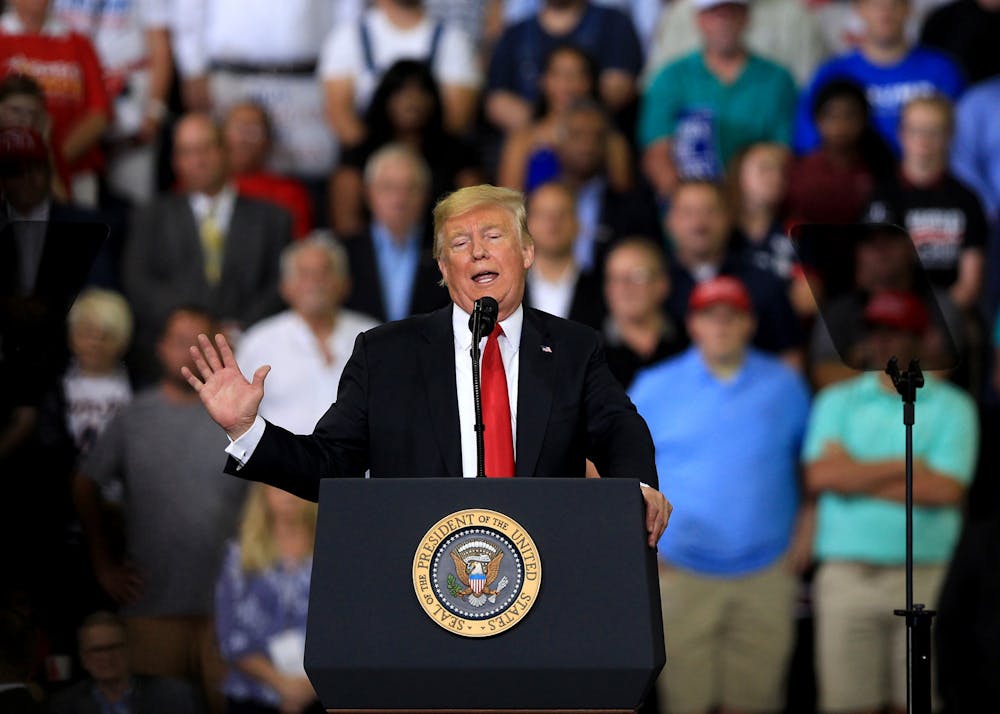The Republican National Convention, which took place this week, was held in a hybrid manner, with some speeches being in person and others being held virtually.
Here are three takeaways from this year’s Republication National Convention:
President Trump accepted the nomination on the White House Lawn
On the final night of the convention, President Donald Trump accepted the Republican Party’s nomination on the White House lawn in front of an estimated crowd of 1,500 people, according to CBS reporter Ben Tracy. Washington, D.C. limits gatherings to 50 people, but federal land is exempt from that rule due to a 1973 law that provided the city government with the power to pass local laws and ordinances.
Josh Dawsey, a Washington Post White House correspondent, reported that attendees at the president’s speech were not tested for COVID-19. Many in the White House audience were not wearing masks during the speech, with most cabinet officials foregoing the protective measure. Secretary Alex Azar, secretary of health and human services, was wearing a mask, but Treasury Secretary Steven Mnuchin and Commerce Secretary Wilbur Ross — the latter of whom is 82 years old — were not wearing masks.
“For months, Trump had been saying he wanted to give his acceptance speech in a setting that looked ‘pre-coronavirus,’ one that made people forget the pandemic,” CNBC’s Christina Wilke wrote. “Trump got his wish.”
The president’s speech lasted more than an hour, which mirrored one of his campaign rallies and his 2016 convention address, which also lasted more than an hour.
Some elements of the convention looked the same. For example, as with the 2016 convention, protestors marched outside of the convention. Photos and videos of the protests on social media show little-to-no social distancing among the protesters, though most are wearing masks.
A source of controversy has been potential violations of the Hatch Act, a government regulation passed in 1939.
“The law prohibits federal employees from engaging in most political activity inside federal buildings,” NPR reporter Sam Gringlas wrote.
The president and vice president are exempt from the Hatch Act, but other federal employees, such as Secretary of State Mike Pompeo, are not.
President Trump’s speech on the last night of the convention has been called a potential violation of the Hatch Act, as other members of the executive branch may have been involved in the planning of the event.
GOP's next generation
Party conventions commonly feature the next generation of their party. This GOP convention was no exception. New York Congresswoman Elise Stefanik, N.Y.-21st District— who in 2014 was the youngest female Republican to ever be elected to Congress — became one of the president’s strongest defenders in the House’s impeachment inquiry. She was given a slot at this year’s convention.
“I was proud to lead the effort standing up for the Constitution, President Trump and most importantly the American people,” Stefanik said in her speech Wednesday. “This attack was not just on the president. It was an attack on you – your voice and your vote.”
Also among the convention speakers was Madison Cawthorne, a 25-year-old who is running for the North Carolina 11th district. Cawthorne won the nomination for the 11th district after he unexpectedly defeated Trump’s pick in the district’s run-off election by more than 31 points.
Cawthorne survived a 2014 near-fatal car accident that left him paralyzed from the waist down.
"I say to Americans who love our country — young and old — be a radical for freedom,” Cawthorne said. “Be a radical for liberty. Be a radical for our republic. For which I stand."
Cawthorne then stood up out of his wheelchair with assistance. He stood for the remainder of the speech.
Joe Biden
Trump attacked Biden throughout the speech, a contrast to Biden’s convention speech. Biden never actually mentioned Trump by name in the speech, and he rarely referred to the president at all.
“At the Democrat National Convention, Joe Biden and his party repeatedly assailed America as a land of racial, economic and social injustice,” Trump said. “So tonight I ask you a simple question: How can the Democrat Party ask to lead our country when it spends so much time tearing down our country?”
Trump mentioned Biden’s name 41 times throughout the speech.




